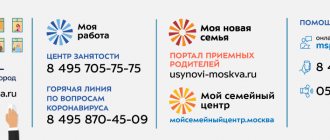Article “From the history of the development of speech therapy in Russia (IX – XX centuries)”
Grafova N.A.
Municipal budgetary educational institution secondary school No. 12, city district Kolomna
Scientific supervisor - N.P. Shchetinina Ph.D., Associate Professor Department of Pedagogy and Management in Education of the Federal State Budgetary Educational Institution of Higher Education "Russian State University named after S.A. Yesenin"
From the history of the development of speech therapy in Russia
( IX
– XX centuries)
Abstract:
the article is devoted to the formation of speech therapy as a branch of pedagogical science.
The author reveals historical aspects of the development of speech therapy, from the times of Ancient Rus' to the present; analyzes the views of domestic scientists on the problem. Key words:
correctional work, development, defect, speech, sound pronunciation, speech therapy.
Abstract:
the article is devoted to the questions of logopedia formation as a branch of pedagogical sciences.
The author discloses historical aspects of logopedia development since Ancient Russia till modern time, analyzes views of Russian scientists on the problem. Keywords : correctional work, developmental, defect, speech, zvukoproiznoshenija, speech therapy.
Speech therapy, before it became a branch of pedagogical science, went through a long path of historical development.
The development of speech therapy in Russia had its own characteristics, since it was constantly adapting to scientific canons, which were not always related to correctional work.
Researchers date the first mentions of problems in the development of children's speech to the period of Ancient Rus', where in the surviving chronicles, proverbs, sayings and beliefs there are ideas of the ancient Slavs about speech disorders: linguistic disease (speech disease), tongue-tied (not speaking quickly, speaking with difficulty), stagnation (slowness), goofy (speaking through the nose, nasal), faflu (lisp), stuttering (stuttering), dumb (deprived of the way to speak (“Deaf and dumb”) and others [4].
As such, the ancient Slavs did not have a clear distinction between different speech defects, but already at that time one can find that speech and hearing defects were distinguished (mute and deaf); deficiencies in sound pronunciation (tongue-tied, foflet, alalyka, kortavlenye), deficiencies in voice (humming), tempo (stammering), and phrasal speech (dumbness, muteness, humming). But they understood speech defects as a disease, an ailment sent to a person by higher or dark forces. And it is worth noting that the ancient Slavs did not have generally accepted and clear terms for these disorders [3, 62-63].
Since the 18th century, the development of speech therapy has become more active and expanded. Thus, we find interesting ideas about the development of children’s speech in the works of M.V. Lomonosov, A.N. Radishcheva .
M.V. Lomonosov (1711 - 1765) assigned a large role to exercises that developed correct expressive speech, compliance with certain rules of speech, and exercises for voice strength. He saw the dependence of clear and correct speech on special speech exercises, and considered it obligatory to exercise the strength of the voice, use pauses, monitor intonation and the use of gestures [3, 117]. A.N. Radishchev (1749 - 1802) considered speech in close connection with all mental processes. He expressed the idea that it is possible for a person to do without loud speech; in this case, one can speak with body movements. His main merit is in considering the development of speech in close connection with all mental processes [3, 123].
K.D. Ushinsky (1824 - 1870) pointed out that it is important not only to educate a child, but also to study his physical and psychological characteristics. He wrote: “If pedagogy wants to educate a person in all respects, then it must first get to know him in all respects. Sciences that will help the teacher study the child from all sides, K.D. Ushinsky named «
anthropological sciences." He attached particular importance to physiology, anatomy, psychology, and logic, which gradually became part of the mandatory range of professional knowledge of teachers, thanks to the extensive translated literature that appeared in Russia at that time. Psychology, physiology and logic K.D. Ushinsky considered “the main foundations of pedagogy” [6].
He also considered it important to study such processes as memory, attention, emotions, and will. K.D. Ushinsky tried to approach the examination of speech from a physiological position. “In the various movements that cause human speech, not just one nerve takes part, but a whole system of nerves and muscles.” He points out what the disruption of the nerve leads to: “the trigeminal controls the movements of the lower jaw. Due to paresis, the movement of the lower jaw is impaired.” In addition, he attached great importance to the social environment in the development of children's speech, noting that a person raised alone will be mute. He also considered the importance of written language and developed a method for teaching reading and writing [3].
K.D. Ushinsky paid attention to systematic exercises in the development of children's speech. The development of oral and written speech was considered as the formation of a skill. He believed that educators and teachers should not only form skills and habits, but also correct acquired ones. In the process of re-educating a child, one should delve into the cause and act against the cause, and not against the effect. Among the disadvantages of K.D. Ushinsky attributed incorrect sound pronunciation, deficiencies in the grammatical structure of speech, as well as excessive smooth empty speech [3].
In 1893 A.V. Bezlyudova, exploring the problem of the development of speech therapy science in Russia, starting from the second half of the 19th century, identified four stages:
First stage (1825 – 1860)
Second stage (1861 – 1880)
Third stage (1881 – 1900)
.
Fourth stage (1901 – 1925)
[1].
First stage (1825 – 1860).
In Russia, until the second quarter of the 19th century, there was no special research on speech therapy. The first work was “On Stuttering” (1838) by Christopher Lagouzin. At this stage, the material on speech pathology was mainly contained in translations and reviews of works by foreign authors. But H. Lagusen's monograph is superior to the work of foreign scientists. If in foreign studies there was an empirical approach, then in the monograph by H. Lagusen there was a research approach. When analyzing speech disorders, he implemented the principle of consistency and systematicity.
Many authors' methods for overcoming speech disorders were symptomatic and medical in nature. Some authors referred to the use of special medical methods. A number of works contained indications of didactic methods, but they were of a training nature: the nurse, working with children who stutter, spent a long time strengthening the pronunciation of difficult syllables.
At this stage, the foundations were created for the formation in Russia of an independent field of knowledge about speech pathology.
Second stage (1861 – 1880).
Along with the works of foreign researchers, the works of domestic scientists are beginning to appear, in which many problems of speech pathology are solved. Priority in research on a number of problems of aphasia belonged to A.Ya. Kozhevnikov (1874), V.M. Tarnovsky (1867, 1868).
During this period, many speech disorders are studied - stuttering, aphasia, tongue-tiedness, rhinolalia, tachylalia.
In Russia, from a number of medical sciences and psychology, a special field of knowledge is distinguished - speech pathology (A. Kusmaul, 1877); speech therapy as a science has not yet developed. In addition to methods for overcoming stuttering, methods for correcting sound pronunciation, rhinolalia, and tachylalia are beginning to be developed, but they are of a training nature. Medical methods are more often used to correct speech and voice disorders.
Priority in research on a number of problems of aphasia belonged to A.Ya. Kozhevnikov (1874), V.M. Tarnovsky (1867, 1868).
Third stage. (1881 – 1900).
The works of domestic authors appeared on a par with the works of foreign ones. There are two main approaches to the study of speech disorders: mechanistic and functional.
In the works of V.F. Oltushevsky, V.F. Khmelevsky, I.A. Sikorsky, T.A. Andrus and others widely used the principle of systematicity. The etiology, mechanism, symptoms, dynamics and methods of overcoming and preventing speech disorders are often analyzed in conjunction, and the principle of development is used. Speech pathology is considered as a process, the nature of which depends on various factors. A separate area of knowledge is highlighted - logopathology. Speech therapy is gradually emerging as a pedagogical science. New methods for eliminating speech defects are being developed, anatomical, physiological and other factors are taken into account, and the role of the individual and the microsocial environment is taken into account.
The fourth stage (1901 – 1925).
The number of works by Soviet authors significantly exceeds the number of works by foreign authors; all forms of speech pathology are analyzed (works by V.M. Bogdanov-Berezovsky “The situation of the deaf-mute in Russia: with a review of the current state of the issue of restoring hearing in the deaf-mute”, G.D. Netkachev “Stuttering” ", "Clinic and psychotherapy of stuttering", S. M. Dobrogaeva "Barring, its origin and treatment" and others).
Different approaches to the study of speech pathology are defined:
- physiological (S.M. Dobrogaev)
- neurological (G.O. Astvatsaturov)
- psychological (G.D. Netkachev, R.E. Levina), which became of great importance in the 30s.
Speech therapy is acquiring the status of an independent science. In overcoming speech disorders, most researchers use a differentiated approach.
Speech therapy flourished at the beginning of the 20th century, when government agencies began opening in 1900 to provide speech therapy services to children with hearing impairments. This was done by N.A. Rau, P.F. Rau, A.F. Rau, E.Yu. Rau. In the same year F.A. Rau organizes short-term training courses for speech therapists.
V.M. Bekhterev (1916 - 1918) analyzed the defeat and underdevelopment of the speech-forming apparatus and various speech disorders arising on this basis.
In 1924 L.S. Vygotsky explored the problem of childhood defectiveness as a social problem.
In 1925, the People's Commissariat of Health organized special speech therapy rooms in Moscow for the treatment of stuttering in children and adolescents, and then a hospital was opened for aphasics and stutterers, organized by Yu.A. Florentskaya.
In 1929, the Ministry of Health opened a special clinic for people with hearing, speech and vision impairments, headed by N.P. Tyapugin.
During this period, under the leadership of L.S. Vygotsky began to hold conferences at which the most severe cases of speech disorders were publicly discussed. They played a major role in the development of the theory and practice of speech therapy.
In the 40s, important principles of differential diagnosis began to emerge: distinguishing speech disorders from other forms of speech disorders (for example, speech disorders with hearing loss).
In 1931, the People's Commissariat of Education issued a decree on the introduction of universal compulsory primary education for physically handicapped, mentally retarded, and speech-impaired children and adolescents.
In 1931, the first edition of the textbook “Speech Therapy” (M.E. Khvattsev) was published, which was revised and supplemented in 1959 based on the achievements of speech therapy of that time. It contained methodological recommendations for working with children with speech disorders [5] .
In 1932, a special auditory-verbal nursery for children with hearing and speech impairments was opened in the orphanage, the director of which was E.F. Rau.
In 1940, the staff of speech therapists was approved in the People's Commissariat of Health (one staff unit in a children's clinic), but the qualifications and tariffs for the work of speech therapists remained unspecified [3].
After the war, the number of special institutions increased. Already in the 50s, in the works of L.S. Vygotsky, R.M. Boskis, R.E. Levina expanded the subject of speech therapy with new pedagogical and theoretical content. The method of systemic psychological analysis was successfully used, aimed at revealing the psychological nature of speech, cognitive and emotional-volitional disorders in non-speaking children (alaliks) in the process of overcoming these disorders.
The last one, which determines the organization of speech therapy assistance to schoolchildren and clarifies the financial and legal situation of a speech therapist, is the resolution of the Council of Ministers of the USSR dated 15/VIII 1948 on the organization in the RSFSR “from January 1, 1949, at secondary schools and republican, regional and regional centers of 120 speech therapy centers consisting of one speech therapist teacher with a higher pedagogical education (defectology).” A speech therapist is equivalent to a teacher in grades VIII-X of a secondary school [3].
In 1951, a psychological and pedagogical classification was developed, which did not meet the requirements of special pedagogical practice, so in the near future R.E. Levina improved the psychological and pedagogical classification. And in 1959 O.V. Pravdina developed a working clinical classification, which was refined in 1969 by S.S. Lyapidevsky and B.M. Grinshpun [5].
New methods were introduced to eliminate violations of oral and written speech, the types of speech anomalies for the school category were specified, and provisions on the systemic structure of language were developed, symptoms, pathogenesis, and the clinic of speech disorders were clarified (1960 - 1970).
Since 1972, the “Nomenclature of preschool institutions for abnormal children of the system of the USSR Ministry of Education” has been approved - kindergartens and groups for children with hearing, speech, vision, intelligence, and musculoskeletal disorders. Since 1975, speech therapy groups have been opened by law at general kindergartens and specialized kindergartens and nurseries. In 1976, the “Regulations on the establishment of speech therapy centers in secondary schools” was adopted [3].
Intensive training of scientific personnel in speech therapy became characteristic of these years. So, for example, in the educational system itself at the defectology faculty of Moscow State Pedagogical Institute. IN AND. Lenin develops a link in the research work of students, where Professor S.S. becomes the scientific director of the student scientific society of the faculty. Lyapidevsky. And since 1975, assistant professor became the leader. IN AND. Seliverstov.
In the 1977-1978 academic year, a speech therapy department was opened at the defectology faculty of Leningrad State Pedagogical Institute named after. A.I. Herzen. And in St. Petersburg, since 1978, a speech therapy department was opened, where they studied systemic speech disorders with complex defects in children with hearing, vision, intelligence, and motor development impairments.
From 1981 to 1996, the department of speech therapy was headed by Larisa Stepanovna Volkova, who published the textbook “Speech Therapy” and “Anthology on Speech Therapy.” She is the second Doctor of Science in this field after Rosa Evgenievna Levina [5].
In 1990, the Experimental Defectology Institute (NIIT) became the Institute of Correctional Pedagogy.
In 2000, speech therapy specialist T.B. Filicheva defended her doctoral dissertation, where she identified an additional fourth level of speech development disorders in children with general speech underdevelopment (GSD) [2].
The current stage of development of our country is characterized by radical political transformations, democratization of society, rethinking by the state and society of human rights, the rights of the child, and the disabled. Private charitable initiatives and church patronage are allowed, and the rights of parents of children with developmental disabilities are expanded. In today's incredibly difficult economic conditions, the problems of families with children with developmental disabilities have become aggravated and complicated, which is associated with the transition to independent financing of many educational institutions.
Therefore, it is very important, based on the achievements of the history of speech therapy, to develop various methods, games, and exercises for speech therapists to work with children in order to correct their speech.
Literature
1. Bezlyudova A.V. Speech pathology: history of study, diagnosis, overcoming. - St. Petersburg: Education, 1992. - p. 17-27. Electronic resource / Access mode: https://pedlib.ru/Books/2/0005/2_0005-2.shtml#book_page_top (access date 10/26/2016).
2. Historical information about the formation and development of domestic speech therapy. Electronic resource / Access mode: https://referatwork.ru/category/psikhologiya/view/369508_istoricheskie_svedeniya_o_stanovlenii_i_razvitii_otechestvennoy_logopedii/ (date accessed November 8, 2016)
3. Seliverstov V.I. History of speech therapy. Medical and pedagogical foundations: Textbook for universities - M.: Academic Project, “Gaudeamus” 2003. - 384 p.
4. Seliverstov V.I. First information about speech disorders and methods for overcoming them. Methodological developments for special course “History of Speech Therapy”: Vol. 1. - M.: Academic Project, 1983. - 732 p.
5. Reader on speech therapy (extracts and texts): Textbook for students of higher and secondary special pedagogical educational institutions: In 2 vols. T. I / Ed. L. S. Volkova and V. I. Seliverstov. — M.: Humanite. ed. VLADOS center, 1997. - 560 p.
6. Shchetinina N.P. Development of higher pedagogical education abroad and in Russia. Electronic educational resource / Ryazan, 2015. / Access mode: https://www.rsu.edu.ru/wordpress/wp-content/uploads/e-learning/ZUMK-razvitie-vishego-pedagogicheskogo-obrazovaniya-za-rubezhom- iv-rossii/ (accessed November 4, 2016).
By order of the President
By September 1, 2022, enrollment in Russian universities for undergraduate and graduate programs for the training of speech therapists and speech pathologists should be increased. This is stated in the list of instructions of Russian President Vladimir Putin following the meeting of the State Council Presidium on August 25.
According to information on the Kremlin website, it is necessary to “ensure an increase in the target numbers for admission in the field of training “Special (Special Defectology) Education” for bachelor’s and master’s programs, taking into account data from monitoring the staffing of educational organizations with defectologists, speech therapists and tutors.”
Pure diction
Photo: RIA Novosti/Kirill Kallinikov
The head of state also instructed the Ministry of Education and Science and the Ministry of Education to include modules on correctional pedagogy and correctional psychology in educational programs of secondary vocational and higher education in the field of training “Education and Pedagogical Sciences.” They should be aimed at developing professional competencies in organizing educational activities for students with disabilities.
“The main problem of Russian education is motivation”
Head of the Ministry of Education and Science of the Russian Federation Valery Falkov - about the new world without degrees and titles, the all-Russian grant accounting system and engineering schools






